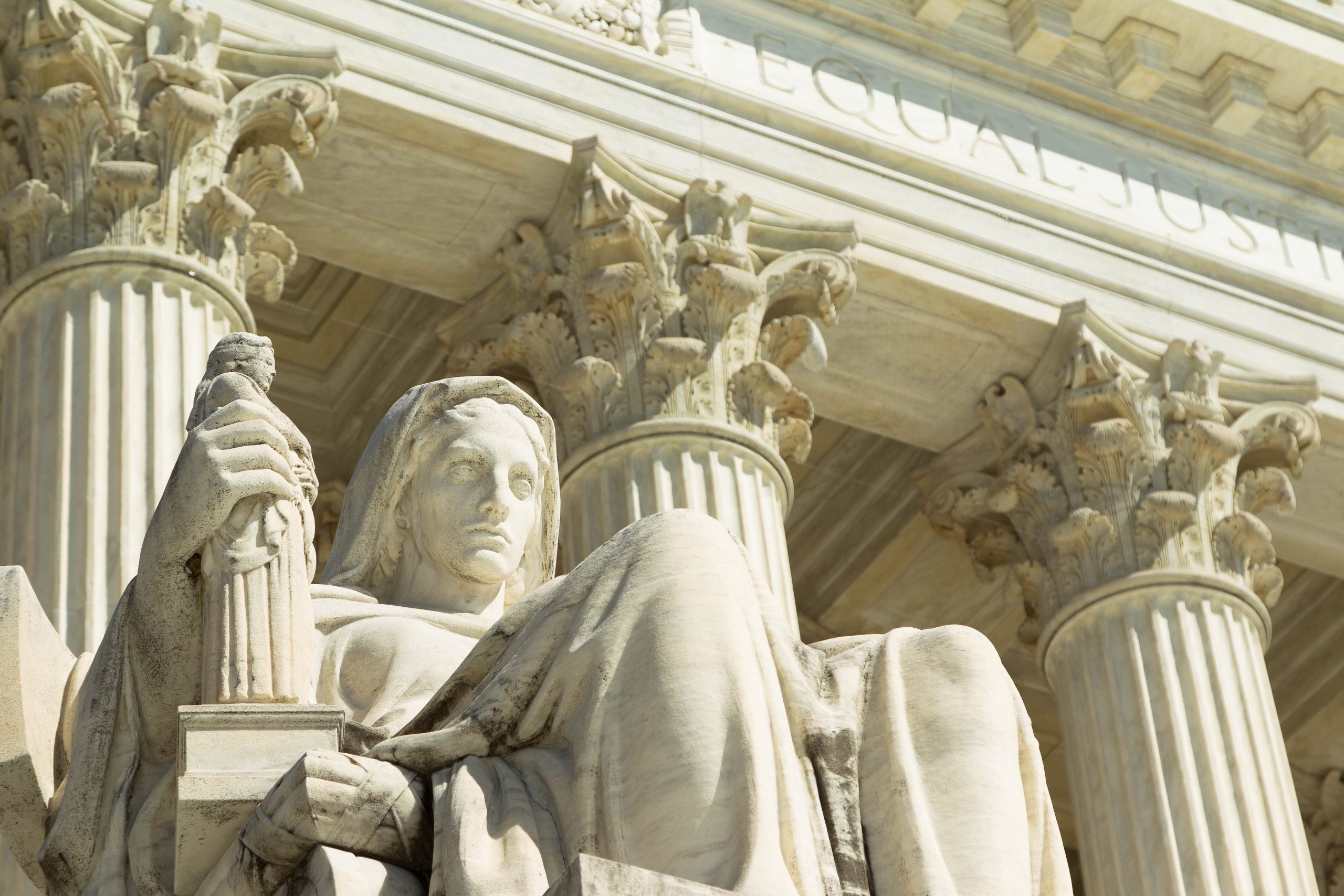Justices consider liability for officials who block critics on social media


On Tuesday the Supreme Court will hear oral arguments in a pair of cases involving liability for public officials who block critics on their personal social-media accounts. The two cases, O’Connor-Ratcliff v. Garnier and Lindke v. Freed, are the first in a series of disputes this term arising out of the relationship between government and social media.
O’Connor-Ratcliff v. Garnier
In the first case on Tuesday, the justices are reviewing a ruling by the U.S. Court of Appeals for the 9th Circuit, which held that two members of a southern California school board – Michelle O’Connor-Ratcliff and T.J. Zane – violated the First Amendment when they blocked two parents who criticized them on their personal Facebook and Twitter accounts.
O’Connor-Ratcliff and Zane first ran for seats on the school board in the Poway Unified School District in 2014. They have private Facebook pages for family members and friends, but they created the Facebook pages at issue in this case to promote their campaigns. Once elected, O’Connor-Ratcliff and Zane continued to use their social-media accounts to provide information about the board and its work.

Two parents, Christopher and Kimberly Garnier, repeatedly posted lengthy (and sometimes repetitive) criticisms of the school board members on O’Connor-Ratcliff’s and Zane’s social media pages. O’Connor-Ratcliff and Zane first deleted or hid the comments, but they eventually resorted to blocking the Garniers.
The Garniers went to federal court, where they alleged that the school board members violated the First Amendment when they blocked them from their social media pages.
The 9th Circuit agreed. It explained that no matter what test applies to determine whether a public official’s conduct is the kind of state action that can violate the Constitution, the main question for a court is whether the violation of rights that a plaintiff is alleging “is fairly attributable to the government.” In the Garniers’ case, the court of appeals reasoned, because of the “close nexus between the Trustees’ use of their social media pages and their official positions,” the decision by O’Connor-Ratcliff and Zane to block the Garniers was state action.
O’Connor-Ratcliff and Zane went to the Supreme Court, which agreed earlier this year to hear their case. They push back against the test on which the 9th Circuit relied, arguing instead that the central question in a case like this is whether a government official acted in her official or personal capacity. And in this case, they maintain, they operated their social-media accounts in their personal, rather than official, capacity: They had created the accounts on their own, and no one would have believed that the pages were government pages, even if they didn’t include disclaimers to make clear that the pages were personal ones.
It doesn’t matter, O’Connor-Ratcliff and Zane continue, that the social-media pages included information related to their work on the school board. “The only workable way,” they write, “to determine whether such speech carries out their duties is to consider whether the State requires, controls, or facilitates it—none of which happened here.”
O’Connor-Ratcliff and Zane warn that if the 9th Circuit’s decision is allowed to stand, it will have broader First Amendment effects, by causing public officials like O’Connor-Ratcliff and Zane to censor their own speech.
The Garniers counter that under the Supreme Court’s cases, government officials act on behalf of the state (and therefore can be held liable for violating the First Amendment) whenever they are doing their job – precisely what O’Connor-Ratcliff and Zane were doing when they blocked the Garniers in this case. Indeed, the Garniers note, O’Connor-Ratcliff and Zane acknowledge that keeping the public informed about what the school board was doing was part of their responsibility – under both California law and the board’s bylaws – as members of the board. Moreover, the Garniers say, O’Connor-Ratcliff and Zane presented and ran their pages as “official” pages for their positions – indeed, they had separate, private pages for their families and friends.
Even if the court finds that the school board members were acting on behalf of the government, the Garniers emphasize, that is “only the first step,” because a plaintiff in a case like this must still show that the government official also violated the Constitution. In a case like this, they stress, the First Amendment does not prohibit government officials from imposing some neutral restrictions – such as word limits or barring repetitive posts – on social-media comments. And there is thus no need for the justices to “contort state action doctrine to provide protections that the Trustees do not deserve as a matter of First Amendment law.”
Lindke v. Freed
The second case pits Kevin Lindke, a resident of Port Huron, Michigan, against James Freed, the city manager. Lindke did not approve of Freed’s handling of the pandemic and left critical comments on Freed’s Facebook page, causing Freed first to delete his comments and then to block him. That prompted Lindke to go to court, where he argued that blocking him violated the First Amendment. But the U.S. Court of Appeals for the 6th Circuit rejected that argument, holding that because Freed maintained his Facebook page on his own, and did not operate it as part of his duties as the city manager, there was no state action and therefore no First Amendment violation.
In the Supreme Court, Lindke contends that there is no “one-size-fits-all” test to determine whether a government official’s conduct is state action. “Under this Court’s jurisprudence,” he writes, “the question is whether the character of the defendant’s conduct was sufficiently governmental to make it fair to treat the conduct as state action.”
To determine whether a government official was acting in a private or public capacity, Lindke contends, courts have focused on whether an official purported to act in a government role, and whether the official’s conduct served a government purpose or instead a private one. Here, he says, all signs point to Freed having acted on behalf of the city government: His Facebook page “was designed to appear as an extension of his position as City Manager”; he used it “as a substitute for formal channels of communication,” often sharing information about the city’s business on it; and the dispute stems from Freed’s decision to block Lindke after Lindke complained about how the city was dealing with the pandemic.
Freed counters that, as the 6th Circuit explained, the key question in determining whether a government official’s conduct constituted state action is whether the conduct is “fairly attributable to the State,” so that the state is responsible for it – and, in cases like this, whether the operation of the social-media account is part of the official’s duties or could only happen as a result of the official’s position in government.
Here, Freed emphasizes, Freed’s Facebook page was his only Facebook account, created while he was in college – six years before he was hired to work as the city manager, an unelected position. Freed’s operation of his Facebook page was not state action because he was not carrying out his duties as city manager when he maintained it, and it does not matter whether his page appeared to be related to his job.
Freed argues that focusing on the appearance and purpose of a government official’s social-media page, as Lindke suggests, would be “inherently subjective.” It could also sweep in too much speech, Freed contends, including personal social-media accounts that resemble an official’s “business” account. And adopting the test outlined by the 9th Circuit in the O’Connor-Ratcliff case, Freed cautions, could “chill the social media speech of 21 million public sector employees without having any significant benefit to First Amendment rights.”
Tuesday’s cases are not the first time that the justices have been asked to weigh in on the question of whether public officials are acting as government officials and therefore can violate the First Amendment when they block people on their personal social-media accounts. In 2021, the justices considered a petition filed by former President Donald Trump, asking them to review a ruling by a lower court that Trump violated the First Amendment when he blocked the Knight First Amendment Institute and several individuals who had criticized Trump on the social media platform X, formerly known as Twitter.
The justices sent Trump’s case back to the court of appeals with instructions to dismiss the case because by then Trump was no longer president. But the question at the core of Trump’s case returned to them less than a year and a half later, in disputes involving government officials with significantly lower profiles than Trump’s. O’Connor-Ratcliff and Lindke are only the first of several cases this term involving social media: The justices will hear oral argument sometime next year in a pair of challenges to controversial laws in Florida and Texas that seek to regulate social-media companies, as well as a dispute alleging that the federal government violated the First Amendment by pressuring social-media companies to remove false or misleading content about (among other things) the 2020 election and COVID-19.
Posted in Merits Cases
Cases: O’Connor-Ratcliff v. Garnier, Lindke v. Freed
